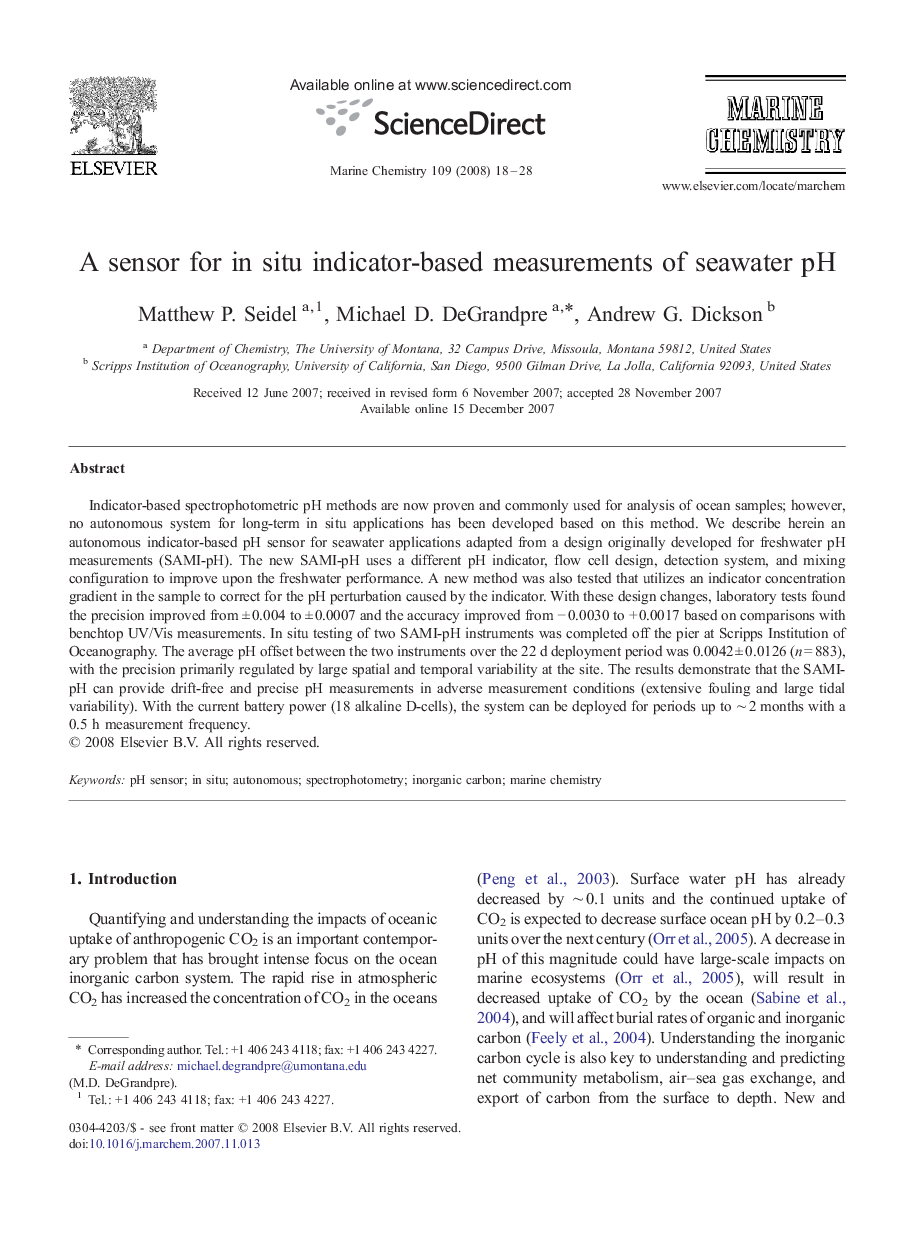| Article ID | Journal | Published Year | Pages | File Type |
|---|---|---|---|---|
| 1262384 | Marine Chemistry | 2008 | 11 Pages |
Indicator-based spectrophotometric pH methods are now proven and commonly used for analysis of ocean samples; however, no autonomous system for long-term in situ applications has been developed based on this method. We describe herein an autonomous indicator-based pH sensor for seawater applications adapted from a design originally developed for freshwater pH measurements (SAMI-pH). The new SAMI-pH uses a different pH indicator, flow cell design, detection system, and mixing configuration to improve upon the freshwater performance. A new method was also tested that utilizes an indicator concentration gradient in the sample to correct for the pH perturbation caused by the indicator. With these design changes, laboratory tests found the precision improved from ± 0.004 to ± 0.0007 and the accuracy improved from − 0.0030 to + 0.0017 based on comparisons with benchtop UV/Vis measurements. In situ testing of two SAMI-pH instruments was completed off the pier at Scripps Institution of Oceanography. The average pH offset between the two instruments over the 22 d deployment period was 0.0042 ± 0.0126 (n = 883), with the precision primarily regulated by large spatial and temporal variability at the site. The results demonstrate that the SAMI-pH can provide drift-free and precise pH measurements in adverse measurement conditions (extensive fouling and large tidal variability). With the current battery power (18 alkaline D-cells), the system can be deployed for periods up to ∼ 2 months with a 0.5 h measurement frequency.
